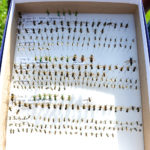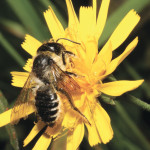
Tag Archives Pollination

Bee death reports continue decline: Health Canada
Neonic pesticides have been widely blamed for these losses but the reality is much more complex

U.S. lists first bumblebee species as endangered
The species is just one of 47 in the U.S. and Canada, a quarter of which are considered at risk of extinction

Honeybee colonies and production are up
Mitigation measures implemented in 2014 appear to be working

Keep calm and love bees and other pollinators
Some people don’t like bees but these beneficial insects are among those that should be respected for what they do

More than just bumblebees
A new research project at AAFC is assessing habitat for the 231 different species of native bees in Manitoba

Bee stewardship award open for nominations
Pollinator protection measures on Canadian farms and ranches are to be recognized with a conservation award

Bee die-offs from multiple causes
Experts and bee industry representatives say the story’s been presented one dimensionally by many in the media

Non-crop plants source of most pesticide contamination of bees
One of the most common sources of pollen contamination is home pest control products

Insect habitat campaigns reaching goals
Bees and monarch butterflies depend on disappearing habitat and campaigns to plant more are getting a lot of attention

Building a better beehive
The University of Manitoba has opened an international competition aimed at giving bees better housing


